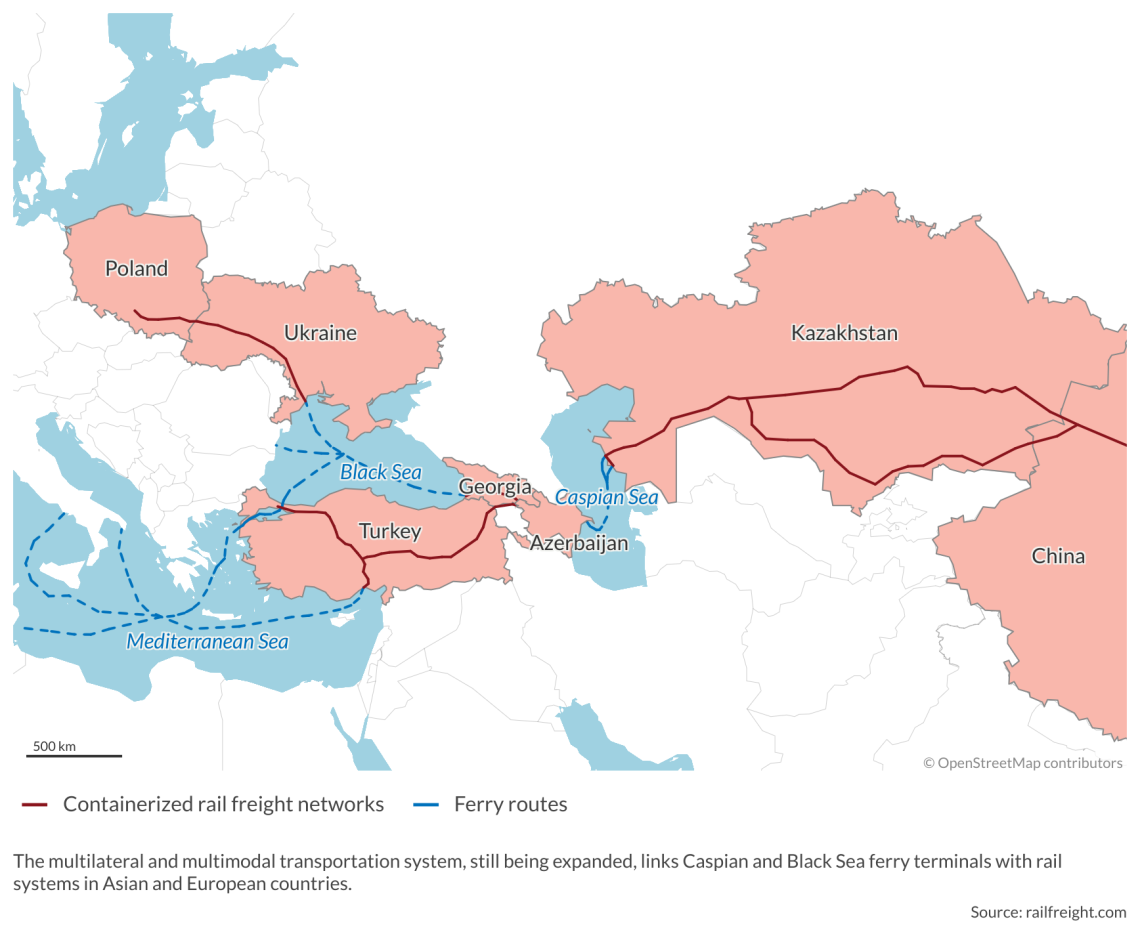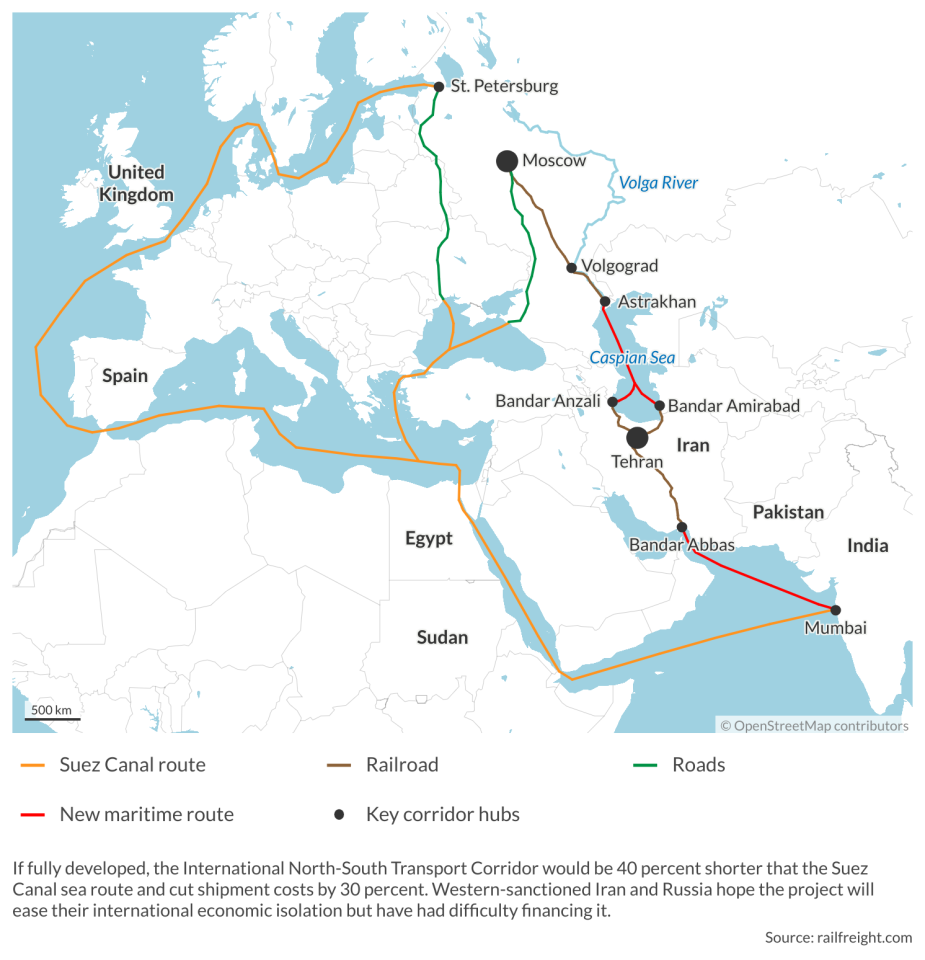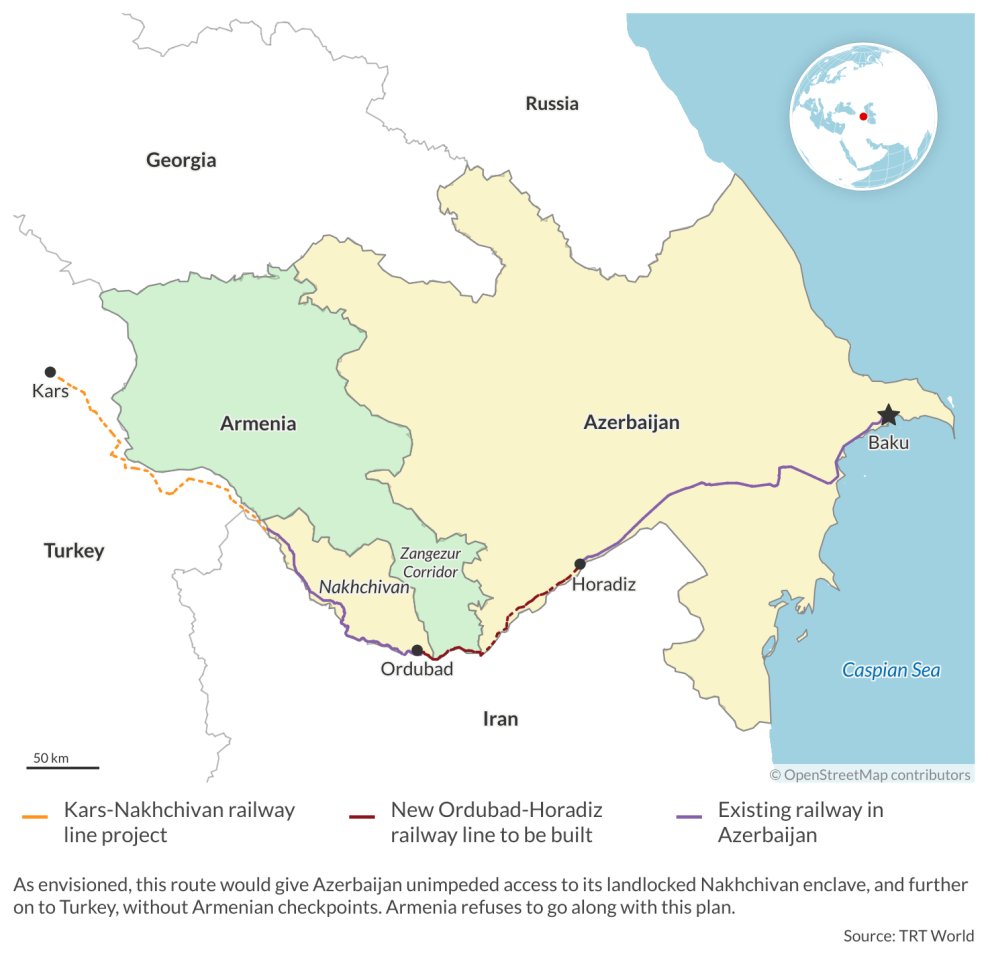The fallout of Azerbaijan’s victory over Armenia
Azerbaijan rid itself of Russia’s “frozen conflict” hotspot. Routing Yerevan’s army has accelerated the changes in the geopolitical landscape of the Southern Caucasus.
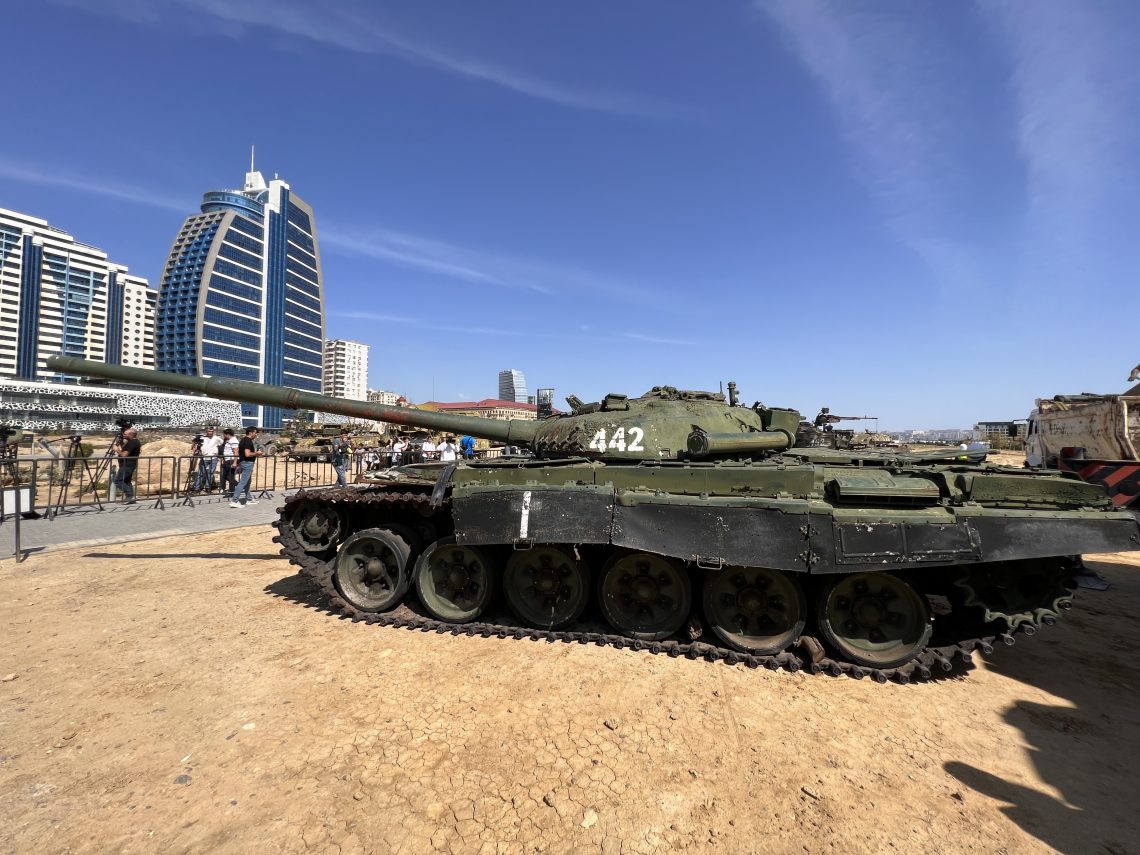
In a nutshell
- The victory of Azerbaijan over Armenia has far-reaching consequences
- Turkey’s role in the Southern Caucasus has grown, and Russia’s has waned
- Isolated Armenia risks being left out of new strategic transport routes
On September 19, 2023, Azerbaijan renewed its military offensive in Nagorno-Karabakh. The aim of its “anti-terror operation” was to force what it referred to as “illegal Armenian military formations” to surrender their weapons and to dissolve the “illegal regime” of the self-proclaimed Republic of Artsakh.
After less than 24 hours of fighting, the Armenian side surrendered. The message is that Azerbaijan has decided to once and for all suppress any form of self-determination for the ethnic Armenian population living in the once-autonomous province.
Failed mediation attempts
The return of kinetic warfare ended a period of rising hopes that, after more than three decades of intermittent war, Armenia and Azerbaijan might finally be nearing a negotiated peace. A first step was taken in early May 2023, when United States Secretary of State Antony Blinken hosted Azeri Foreign Minister Jeyhun Bayramov and Armenian Foreign Minister Ararat Mirzoyan for preliminary talks in Washington. Significant progress was said to have been made, as the sides “agreed on principles” for normalizing their bilateral relations.
By early June, optimism was growing that a peace deal might be signed by year’s end. Yet, matters started to slip by the end of the month when the parties met for intense talks in the U.S. The Azeri side imposed a blockade on the ethnic Armenian population in the contested Nagorno-Karabakh enclave, trapping some 120,000 people and provoking accusations of genocide from the Armenian side. The official explanation from Baku was that it was merely a question of environmental activists seeking to stop illegal mining.
The failure of Western-led mediation will translate into a significant loss of influence.
Attempts at mediation continued, involving the U.S. and the European Union, and separately, Russia. Yet, on July 21, Armenian Prime Minister Nikol Pashinyan warned that renewed war must be considered “very likely” without a peace deal. The conflict was edging toward a resolution with force mainly because the geopolitical framework had turned decisively against Armenia.
The geopolitical consequences
There are three dimensions where the stakes in the process go far beyond Armenia and Azerbaijan.
The first concerns the international order of peaceful conflict resolution. When the Soviet Union collapsed, ethnic Armenians in Nagorno-Karabakh found themselves a landlocked minority inside independent Azerbaijan. Taking up arms to fight for independence, they were supported by the armed forces of Armenia, which, in turn, were backed clandestinely by Russian armed forces. The outcome was an Armenian occupation of territories that stretched between Nagorno-Karabakh and Armenia proper. The self-declared Republic of Artsakh was proclaimed in September 1991.
Facts & figures
The self-announced Republic of Artsakh is gone
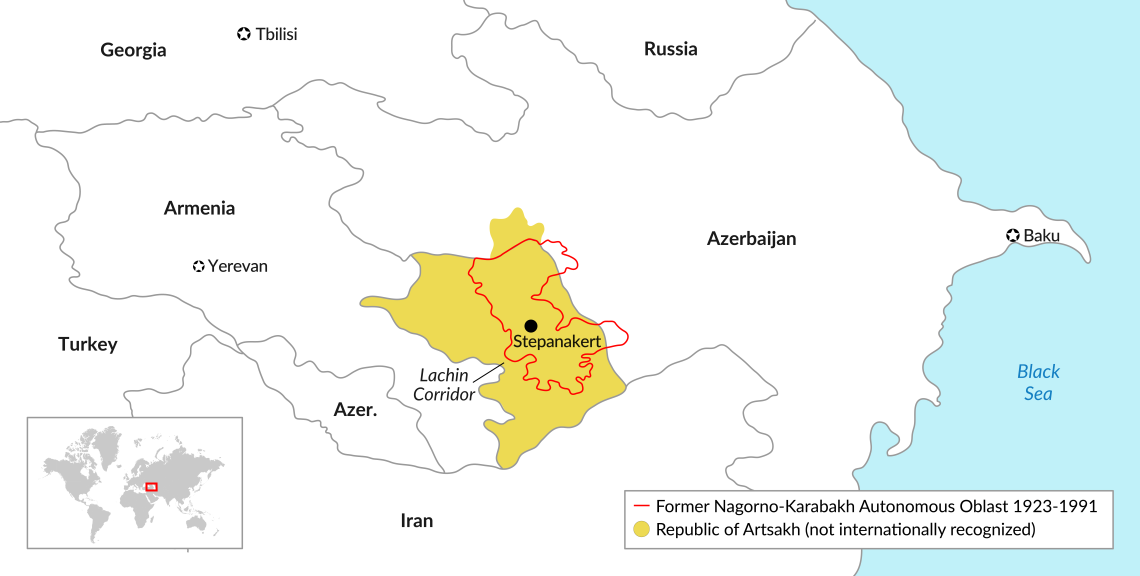
Following the 1994 cease-fire agreement, the Organization for Security and Co-operation in Europe (OSCE) embarked on a lengthy but feeble process of seeking durable peace. That process was halted in 2020 when Azerbaijan launched a military offensive to recapture the Armenian-occupied territories. With support from Turkey, the Azeri forces came close to complete victory. In a last-ditch intervention, Russia managed to broker a cease-fire that entailed the deployment of Russian peacekeepers. Their primary mission was to ensure free movement along the Lachin Corridor that connects Armenia proper with the remnants of Artsakh.
Three years later, Azerbaijan delivered the final blow to the enclave, and now it is questionable if the West will have any future role in the South Caucasus. The failure of Western-led mediation will translate into a significant loss of influence. The problem is compounded by a crisis in the EU’s relations with Georgia. These approached rock bottom as the government in Tbilisi has been reluctant to condemn the Russian war against Ukraine. Meanwhile, relations between Azerbaijan and Turkey are tightening, and the geopolitical circumstances in this strategically important region have shifted in their favor.
Read more on Turkey’s goals
Turkey’s push for greater influence in Central Asia
The second and related dimension concerns the future role of Russia in the South Caucasus. While Armenia and Azerbaijan remained at war, Moscow was able to cement its role as regional hegemon by playing both sides. Although it presented itself as a protector of Armenia, with a sizeable military garrison at Gyumri, it was not shy about selling weapons to both sides. The war in 2020 has brought that balancing act to a screeching halt.
Russia is toast in the region
Although the Moscow-brokered cease-fire that year did save the Armenian forces from a rout, that intervention may well have been the last stand for Russia in the South Caucasus.
Having long been able to use the frozen conflict in Nagorno-Karabakh as leverage to remain a regional hegemon, Moscow has now been decisively outflanked by Turkey. Likely, Turkish President Recep Tayyip Erdogan’s rationale for meeting Russian President Vladimir Putin in Sochi shortly before Azerbaijan’s attack was to inform the Russian side about the pending operation and to demand that its peacekeepers stand aside, which they did.
The currently dominant transportation route through the region is the east-west Trans-Caspian International Transport Route.
It is symptomatic that Moscow did not react when, in the early hours of the assault, the deputy commander of the Russian peacekeeping force, Captain First Rank (Colonel) Ivan Kovgan, was killed. Although he was a senior officer, having served as deputy commander of the submarine force of Russia’s Northern Fleet, his death did not cause much public reaction from Moscow. And it is also telling that Armenia recently opted to hold military drills with U.S. forces.
The strategic transportation game
The third – and in a longer-term perspective, most important – dimension of the geopolitical transformation concerns the regional transport infrastructure. The geographical location of the South Caucasus, wedged between the Caspian and the Black Seas, means that it is critical to controlling the main transport arteries between east and west (China and Europe) and north and south (Russia and the Indian Ocean nations).
In the Soviet era, the South Caucasus was a major conduit for the flow of goods from southern Russia along the Caspian seaboard in Azerbaijan, and onward to Iran and India. The war over Nagorno-Karabakh blocked that route, as its vital link through southern Azerbaijan ended up in a war zone. The railroad link that skirted its southern border fell into disuse and disrepair.
The currently dominant transportation route through the region is the east-west Trans-Caspian International Transport Route. Also known as the Middle Corridor, it forms part of the well-funded Belt and Road Initiative (BRI) launched by China’s President Xi Jinping in 2013.
Facts & figures
Iran is attempting to break its international isolation by promoting two alternative routes to revive the link from north to south. One is the International North-South Transport Corridor (INSTC), a 7,200 kilometer-long “multimode” network of shipping lines, rails and roads that links India with Russia via Iran and Azerbaijan. At present, it is mainly used for running guns from Iran to Russia.
Facts & figures
Tehran has also sought to revive an old proposal for a corridor from the Persian Gulf to the Black Sea that would connect Mumbai in India with Bandar Abbas in Iran and proceed onward to Europe via the South Caucasus, bridging Georgia and Bulgaria across the Black Sea.
Banking on its traditional friendship with Iran, Armenia hopes this latter corridor will bypass Azerbaijan. Its optimism is enhanced by India, which has emerged as a prominent provider of weapons shipped via Iran. Under a $245 million deal signed in October 2022, New Delhi agreed to supply Yerevan with multiple-launch rocket systems, anti-tank rockets and drones, and equipment for demining, communication and night-vision surveillance.
Following decades of mutual animosity, the Armenian side has every reason to fear that life for those who become subjects of Azerbaijan will not be easy.
In March 2023, Armenian Defense Minister Suren Papikyan said the country’s armed forces had received significant deliveries of weapons and ammunition. At the same time, an Armenian delegation visiting New Delhi sought Indian investments for the Persian Gulf-Black Sea Corridor to be drawn via Armenian territory. The proposal was timed to coincide with a visit by Armenian Foreign Minister Ararat Mirzoyan. Eager to circumvent the Suez Canal and avoid disruptions caused by the confrontation between Russia and the West, India may find the idea tempting.
The main problem for both variants of a north-south corridor is that they mainly serve for arms smuggling. In contrast, the BRI and the Middle Corridor bypassing Russia and Iran are firmly based on commercial interest. And while Russia and Iran are economic basket cases, the powers behind the Middle Corridor have ample resources.
In the final analysis, much will depend on whether some form of peace can be engineered. The core concern is the fate of the ethnic Armenian population that remains inside Nagorno-Karabakh. The two sides have agreed in principle to recognize each other’s territorial integrity, which means that the story of Artsakh is over. But the outlook for sustained peace is uncertain.
Following decades of mutual animosity, the Armenian side has every reason to fear that life for those who become subjects of Azerbaijan will not be easy. Although the Azeri blockade of the Lachin Corridor (a mountain road linking Armenia and Artsakh) hardly qualifies as a crime against humanity, it seriously indicates what may be in store for the Armenian minority. The possibility of discrimination and ethnic cleansing policies cannot be ruled out. The outcome of the “anti-terror operation” casts a shadow.
Yerevan is running short on friends who might support its cause. It had a good run with Russia as a patron. Its successful assault on Azerbaijan in the early 1990s would not have been possible without Russian support. The same was true about maintaining the illegal occupation of Azerbaijan’s territories. But these days, Armenia has abandoned all hope of help from Russia in securing an equitable peace.
The Armenian position is so weak that Yerevan may have to accept promises it does not feel it can trust.
Looking to the West for help may appear a logical alternative. Under other circumstances, given their emphasis on human rights and minority protection, Western governments would be sympathetic. But Armenia has alienated many potential Western supporters by cultivating friendship with Iran and playing an intermediary role in Russian sanctions-busting schemes. In 2022, it helped Russia obtain significant shipments of U.S.- and EU-made chips, processors, and the desired consumer goods, such as autos.
If India continues to veer toward the West, Armenia’s only remaining friend will be Iran. Although the two only share a short border stretch, Iran has been a vital supplier of energy and other necessities over the years. However, if needed, it will be easy for Azerbaijan to seal this passage, leaving landlocked Armenia isolated between Turkey, Azerbaijan and Georgia.
Facts & figures
Scenarios
It is possible to envision a scenario where international mediation succeeds in brokering peace between Armenia and Azerbaijan. It would need to contain a mutual pledge to respect each other’s territorial integrity and guarantees for Azerbaijan’s Armenian minority. What speaks in favor of this outcome is that the Armenian position is so weak that Yerevan may have to accept promises it does not feel it can trust. But that still leaves open the question of what Azerbaijan is playing for.
No break for Armenia, Turkey’s gain
A more likely scenario is that Azerbaijan keeps stalling the process in hopes of securing what it views as the main prize. At the core of the alliance between Turkey and Azerbaijan lies the prospect of a transport corridor that links Turkey with Central Asia via Azerbaijan. The key is the Zangezur Corridor, a stretch of land in southern Armenia that separates Azerbaijan from its Nakhichevan exclave, which, in turn, borders Turkey. The war over Nagorno-Karabakh blocked the corridor, which since has remained inaccessible.
Although the Russia-brokered cease-fire did entail opening Zangezur for transport, it was under Russian control, and Armenia refused even to discuss extra-territoriality. Under the present circumstances, Baku will likely maintain pressure on Armenia until it gets concessions on Zangezur. That will open the door for Turkey to expand its presence in Central Asia.
President Erdogan recently lashed out at Iran for opposing the Zangezur Corridor. With a boost in financing from Kazakhstan and Azerbaijan for the Middle Corridor and the financial muscle of the Middle Kingdom in the background, the odds favor an enhanced role for Turkey, reduced prospects for Iranian-Armenian cooperation and waning Russian influence in the South Caucasus.

